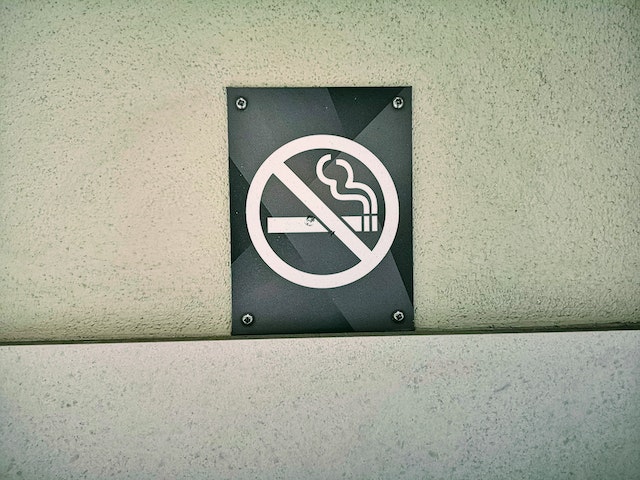
Question: I’ve discovered damage to bench tops and carpet caused by cigarette butts in my rental property. Can I prevent my tenant from smoking at the property and how can I enforce this?
Owning and managing a rental property comes with many risks and responsibilities. One of those risks is potential damage caused if tenants smoke at the property.
Landlords could be left with clean up bills from tobacco odour, cigarette scorch marks or even substantial fire damage from an unattended lit cigarette.
Landlords can put measures in place to reduce the risk of this type of damage occurring at their property.
Include a smoking policy on the lease agreement
A non-smoking policy is one of the most common ways landlords can enforce no smoking at a rental property.
Deciding whether to allow smoking at a rental property is a personal decision for a landlord and one that should be carefully considered.
Landlords may be reluctant to allow smokers to live in their rental property because of the strong smell which comes from tobacco smoke which can linger in carpet, curtains or soft furnishings for some time.
Cigarette butts can also cause scorch marks on carpet and kitchen bench tops which are often hard to repair and may need replacing at the cost to the landlord.
If a non-smoking policy is implemented it should be outlined in the rental agreement with clear stipulations and potential penalties.
Landlords may decide to allow smoking at the property within certain parameters, such as it only being permissible outdoors, reducing the potential risk of damage.
Even if a tenant doesn’t smoke, friends or family visiting the property may smoke so landlords should decide whether it is important to clearly state this on the lease.
Some landlords may not have an issue with smoking at their rental property, instead seeing it as an opportunity to increase the pool of prospective tenants for the property and potentially decrease the time it takes to find a tenant.
Regular property inspections
Regular inspections are a way to ensure the non-smoking policy is being adhered to and can make it easier for landlords to quickly identify if and when any damage has occurred.
Discarded cigarette butts, scorch marks or the smell of tobacco smoke are potential signs of smoking.
If you suspect a tenant is smoking inside the property, you may wish to speak to your tenants about this and discuss the resolution process.
Generally, a first step is to send a warning notice advising the tenant they are breaching the lease agreement (if the lease agreement does indeed prohibit smoking).
If you appoint a property manager they can help you carry out regular inspections and advise of the correct process if a tenant breaches their lease agreement. See: Benefits of a Property Manager.
Screen tenants
When choosing the most suitable tenant a number of factors need to be considered, including whether they’ll make rental payments on time, how they will look after the property and lifestyle factors, including their smoker status.
Thoroughly check potential tenants’ references during the screening process. Speak with previous landlords or property managers and ask specifically whether they had any issues with the tenant in the past.
If you have a non-smoking policy at the property, tenants should be made aware of this.
Screening a tenant from the outset may help you to mitigate potential loss in the future.
Appropriate insurance
Even the most cautious tenant can cause damage to a property, whether accidental or otherwise. This can be extremely costly for the landlord in terms of repairs and the loss of rental income.
Taking out appropriate landlord insurance can help protect landlords from the many risks associated with owning a rental property, including accidental damage by tenants.
Having specialised landlord insurance in place can help protect a landlord if a claimable event happens at the property.
Advertisement
Buying an investment property or looking to refinance? The table below features home loans with some of the lowest interest rates on the market for investors.
| Lender | Home Loan | Interest Rate | Comparison Rate* | Monthly Repayment | Repayment type | Rate Type | Offset | Redraw | Ongoing Fees | Upfront Fees | LVR | Lump Sum Repayment | Additional Repayments | Split Loan Option | Tags | Features | Link | Compare |
|---|---|---|---|---|---|---|---|---|---|---|---|---|---|---|---|---|---|---|
6.19% p.a. | 6.58% p.a. | $2,589 | Principal & Interest | Variable | $0 | $530 | 90% | Featured 90% LVR |
| |||||||||
6.04% p.a. | 7.60% p.a. | $2,408 | Principal & Interest | Fixed | $0 | $180 | 85% | |||||||||||
5.94% p.a. | 6.58% p.a. | $2,383 | Principal & Interest | Fixed | $10 | $150 | 80% | |||||||||||
6.29% p.a. | 6.42% p.a. | $2,473 | Principal & Interest | Variable | $10 | $690 | 90% |
Collections: Property Investment






Share